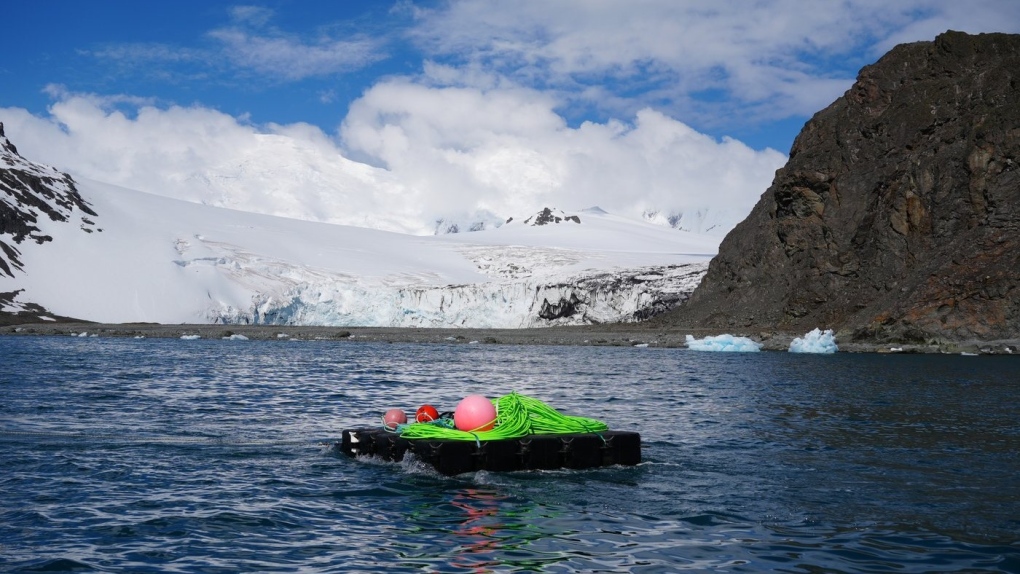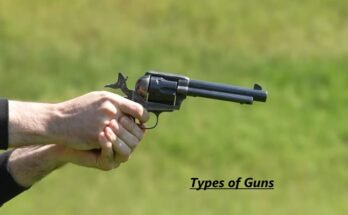Guns can fire underwater, but their effectiveness and accuracy diminish. The water’s resistance quickly slows down the bullet, reducing its range.
Exploring the functionality of firearms in water requires understanding the physics of both the weapon’s mechanisms and the medium of water. This article dives into the fascinating topic of how guns perform when submerged, a scenario often depicted in action movies and video games, sparking curiosity among enthusiasts.
While certain guns are indeed capable of firing underwater due to the independence of their internal combustion mechanisms from the external environment, many complexities impact their performance. Factors like water density, bullet drag, and the potential for damage to the gun itself are essential considerations. Whether for scientific inquiry or practical knowledge, discerning the limitations and potential of using firearms below the surface is an endeavor that merges ballistics with underwater physics, offering insights into the unique interplay between technology and nature.

Credit: www.newyorker.com
Subaqueous Ballistics: The Science Of Firearms Underwater
Imagine a world where the depths of the ocean are not a barrier to the might of firearms. Here, in the realm of subaqueous ballistics, weapons enter a domain with new rules dictated by science. This fascinating discipline explores how guns behave beneath the waves. It is riddled with intriguing physics and surprising facts about how water, far denser than air, alters the behavior of a fired bullet.
The Principles Of Firing A Gun Underwater
Guns can fire underwater. The science behind this involves physics principles similar to those on land but with unique underwater concerns. Modern ammunition contains its own oxidizer, a component of the propellant that reacts to produce the explosive force needed to fire the bullet. This means that a gun can function under the sea, where oxygen is scarce.
- A gun’s trigger gets pulled, and the firing pin strikes the primer.
- The primer ignites the gunpowder, causing an explosion.
- This explosion pushes the bullet through the barrel and into the water.
How Water Density Affects Bullet Trajectories
Once fired, bullets face water’s resistance, vastly greater than air. This resistance quickly saps the kinetic energy from a bullet, reducing its range and power. The science of underwater ballistics shows bullets travel only a few feet in water, compared to many yards or miles in air before losing lethality.
| Bullet Feature | Effect in Air | Effect in Water |
|---|---|---|
| Speed | High | Quickly Reduced |
| Range | Far | Limited |
| Lethality | High | Rapidly Diminished |
In water, bullets veer off course, twirl, and disintegrate faster. The type of bullet and gun also play roles in underwater performance. Variables such as bullet shape, weight, velocity, and caliber have differing impacts on how a bullet behaves once it encounters water.

Credit: www.imdb.com
Historical Perspectives On Underwater Weapons
The quest for dominance beneath the waves has a storied past. Weapons designed for underwater use have evolved significantly over time. Exploring these advances offers insight into how humans have surmounted aquatic challenges. Dive into the rich history with a closer look at the early efforts and modern developments.
Early Attempts At Designing Underwater Guns
Inventions from centuries past show our fascination with the deep sea. The first underwater guns emerged as simple, yet innovative contraptions. Pioneers sought to harmonize gunpowder’s might with the pressure of the ocean depths. They faced the hurdle of keeping the powder dry and igniting it underwater.
- Primitive flintlock mechanisms were encased in waterproof materials.
- Barrels were sealed until the moment of firing.
- Designers experimented with air-filled chambers to aid buoyancy and stability.
Evolution From Spearguns To Modern Firearms
Over time, underwater weaponry took a leap forward. Spearguns, once the choice of fishermen, morphed into more sophisticated tools. They paved the way for the firearms we recognize today. Steel harpoons were propelled using rubber bands or compressed gas. Eventually, firearms specifically for underwater use were developed.
- 1960s saw the introduction of the APS underwater rifle, a Soviet creation using special ammunition.
- The shift from spear to bullet included creating super-cavitating rounds that could travel through water efficiently.
- Modern materials such as titanium advanced the design and effectiveness of underwater weapons.
These advancements transformed the landscape of submerged combat. Now, specialized guns can function at astonishing depths and in challenging conditions. They epitomize human ingenuity in the art of underwater warfare.
Real-world Experiments With Guns And Water
Welcome to an explosive deep-dive into the world of firearms and their aquatic capabilities. Many question whether guns can function underwater and just how differently they behave when immersed. To quench this curiosity, we’ll explore real-world tests that delve into the nitty-gritty of ballistic underwater adventures.
Differences In Firearm Performance In And Out Of Water
Imagine firing a gun in open air. Now picture doing the same beneath the waves. Expect drastic changes in how guns perform. Here’s what happens:
- Range: In water, bullets travel a mere fraction of their air range.
- Power: Water’s density greatly reduces a bullet’s speed and strength.
- Accuracy: Expect less precision due to water’s resistance.
Science shows us that water is almost 800 times denser than air. This significantly affects a firearm’s ballistic properties when submerged.
Safety Concerns When Discharging Firearms Underwater
Safety takes the forefront in any discussion about firearms. Underwater, new risks emerge:
- Ricochet: Bullets can bounce off water surfaces unpredictably.
- Shockwave: The gun might create harmful pressure waves.
- Personal Harm: Close-range shooting could harm the shooter due to water pressure changes.
Evaluating the risks is crucial for anyone considering the use of firearms underwater.
The Influence Of Pop Culture
Fascination with guns that operate underwater spikes every time a spy film or a video game showcases a dramatic underwater gunfight. These media forms shape public perception. The imagery stays with viewers, sparking debates about the reality versus the fiction of aquatic gunplay.
How Movies And Video Games Depict Underwater Firearms
Glimpses into the world of underwater warfare in pop culture are nothing short of thrilling. Icons like James Bond make firing a weapon underwater look effortless. Games like “Call of Duty” add to the excitement with characters engaging in submerged combat. These scenes often include:
- Laser-guided guns: Precision shooting under the waves.
- Unlimited visibility: Crystal-clear waters for dramatic effect.
- No recoil effects: Heroes flawlessly manage their firearms.
This depiction raises the bar for underwater firearm expectations among fans.
Separating Fiction From Reality In Aquatic Shootouts
While pop culture paints an enthralling picture, reality tells a different story. Real underwater firearms face:
| Factor | Impact |
|---|---|
| Water density | Slows bullets dramatically, reducing range. |
| Visibility | Often murky, complicating target acquisition. |
| Physics | Alters bullet trajectory, challenging accuracy. |
Specialized weapons exist for such conditions, but their use is far from the effortless image portrayed on screen.
Advances In Underwater Firearms Technology
The realm of underwater firearms technology has seen incredible leaps forward. Traditional guns falter beneath the waves, but humankind’s inventive spirit has unlocked new potentials. Let’s dive into the latest innovations enhancing the performance of guns in aquatic environments.
Innovations Aimed At Improving Underwater Gun Function
The challenge of firing a gun underwater demands ingenious solutions. Advances in this field have made rifle and pistol use deep below the surface a reality.
- Specialized Ammunition: Designers created super-cavitating bullets that form an air bubble during travel, reducing drag.
- Modified Firearms: Guns now have high-pressure waterproofing and enhanced firing mechanisms to combat water resistance.
- Corrosion Resistance: Using materials like titanium and stainless steel guards against the corrosive nature of saltwater.
Futuristic Concepts In Aquatic Weaponry
Beyond today’s technology, visionaries are already crafting tomorrow’s underwater arsenal. These ideas seem straight out of science fiction!
- Electromagnetic Propulsion: Research focuses on using magnetic fields to launch projectiles, eliminating the need for gunpowder.
- Drone Integrated Systems: Imagine controlling remote-operated, armed underwater drones from the safety of a ship.
- Energy-Based Weapons: Scientists are looking into directed energy beams that perform optimally underwater, such as specialized lasers.
Practical Applications And Implications
The concept of firearms that function underwater opens a world of possibilities and challenges. Exploring the practical uses and legal impacts uncovers a fascinating intersection of technology, regulation, and innovation.
Military Uses For Underwater Firearms
Militaries around the world invest in underwater firearms for specialized operations. With unique designs, these guns provide combat effectiveness in aquatic environments.
- Frogmen can engage threats without surfacing
- Silent and stealthy operations are possible
- Amphibious missions are expanded with reliable underwater armaments
Impacts On Civilian Use And Legal Considerations
While fascinating in function, underwater firearms present unique challenges in civilian contexts. They are subject to rigorous legality debates and usage restrictions.
| Aspect | Impact |
|---|---|
| Legal Classification | May be classified differently than standard firearms |
| Usage Restrictions | Special permits may be required |
| Safety Concerns | Public safety is a major consideration |
Owners must navigate local laws and consider the ethical implications of such powerful tools. Responsible use is paramount.

Credit: www.ctvnews.ca
Frequently Asked Questions For Do Guns Work Underwater?
Can Firearms Function Underwater?
Yes, firearms can function underwater but with limited effectiveness. The water resistance significantly reduces bullet speed and accuracy. Firing mechanisms may also fail due to water pressure.
How Does Water Impact A Bullet’s Trajectory?
When a bullet travels through water, it experiences drag force, causing rapid deceleration. This means it will travel a much shorter distance than it would in air, and the trajectory becomes less predictable.
Are Some Guns Designed For Underwater Use?
Yes, there are specialized firearms designed for underwater use, such as amphibian rifles and underwater pistols. These guns are engineered to fire in aquatic environments with better accuracy and reliability.
What Are The Risks Of Firing A Gun Underwater?
Firing a gun underwater can be risky due to increased pressure that affects the weapon’s integrity. There’s also a chance of harming oneself due to bullet ricochet or fragmentation under water.
Conclusion
Wrapping up, exploring the functionality of guns underwater has unveiled fascinating insights. Remember, while firearms can discharge beneath the surface, their effectiveness is limited. Safety and practicality concerns are paramount. Seek professional advice before any underwater firearm experiments, and always prioritize safe handling practices.



